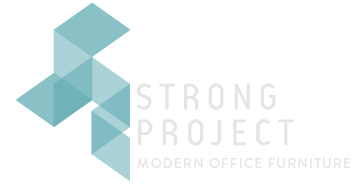Modern businesses thrive with diversity among employees. But what about the less commonly discussed need for neurodiversity?
According to the Health Assured Organization, the term neurodiversity simply means “someone who thinks differently from the way the majority (referred to as neurotypical) expect. Neurotypical means the opposite –someone whose brain behaves in the same way as the majority of society.” This can include those who have been labeled with dyspraxia, dyslexia, attention deficit hyperactivity disorder (ADHD), dyscalculia, autism spectrum disorder, and Tourette syndrome. In the world, it is estimated that 15-20% of the population is considered neurodiverse.
Consider incorporating different visuals and acoustics that will help foster innovation at your organization.
But to create a neurodiverse workplace, the first step is to design your workplace with neurodiversity in mind. If you want to invite people who think differently to come work for your company, you also need to think differently when it comes to the layout of your office.
Universal Design
Neurodiversity is a spectrum. Those who are neurodiverse are on both sides of the spectrum—either intellectually challenged or intellectually advanced. This can make it seem difficult to design with both types of people in mind. But instead of focusing on each specific type of person, just remember the concept of “universal design.”
Are you ready and willing to create an environment that fosters innovation across your entire team?
Universal design is the idea that environments should be composed in such a way that they can be accessed, understood, and utilized to the greatest extent by all people.
This means creating several variations of work areas—collaborative, private, open, and focused. In addition, consider incorporating different visuals and acoustics that will help foster innovation at your organization among your neurodiverse population.
Acoustic Elements
Another key factor that comes into play when designing for neurodiversity in the office is noise pollution. Those with ADHD, autism and dyslexia may have a lower tolerance to excessively loud or abrupt noises many of us experience in a bustling office. That’s why installing acoustic paneling around the office, as well as several acoustic seating arrangements, is the perfect option to reduce some of that noise.
Consider high-backed seating, sound-absorbing acoustic panels that hang easily from your ceiling, and other modern noise-reducing solutions to tamp down excessive clamor.
Mobility
We can all get antsy from time to time. For neurodiverse individuals, however, moving around or doing various “self-stimulating behaviors” can actually help release tension and promote focus throughout the workday. Your office needs to be able to work with these individuals—not against them.
With any new hire, it’s important to discuss physical desires when it comes to their workstation. Do they prefer having an adjustable chair that rocks or bounces? Would a sit-to-stand desk help them remain concentrated throughout the workday? Ask these questions and make sure to follow through with the appropriate furniture arrangement.

Designing your modern office with neurodiversity in mind is not challenging. But these design changes are worthless unless they’re being made with a purpose. Are you ready and willing to create an environment that fosters innovation across your entire team?
Do you genuinely believe in the extraordinary capabilities of those who are neurodiverse? Acceptance starts with you. If you want your office and your employees to be accepting of those who are neurodiverse, your work environment—and you—need to be accepting, as well.
Create a workplace where your entire team can thrive with StrongProject.
Diversity: More Than a Workplace Buzzword
Why Flexible Work Design Makes Good Business Sense
Updated Feb 2022





